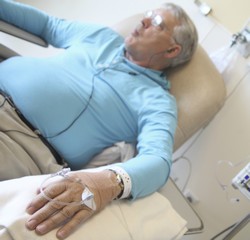A novel sensor for chemotherapy
At present, cancer is the main cause of death in Europe, annually accounting for over 3 million new cases. Standard treatment entails the administration of chemotherapeutic drugs, which work by inhibiting DNA synthesis or the replication of rapidly dividing cells. '5-Fluorouracil' (5-FU) is a drug that has been in use for over 40 years to treat breast, colon and skin cancer. Although 5-FU is relatively well tolerated, some patients develop a deficiency of the 'dihydropyrimidine dehydrogenase' (DPD) enzyme that metabolises and hence deactivates 5-FU. In addition, nearly a third of patients suffer from toxicity side-effects suggesting that the drug pharmacokinetics must be revisited. Scientists on the EU-funded CARESS (A new methodology based on an advanced molecular probe for early detection of DPD enzyme deficiency in oncological patients, also enabling a personalised and effective drug management) project proposed to monitor the activity of DPD and predict 5-FU toxicity. In this context, they worked towards the spectrophotometric evaluation of DPD activity in blood mononuclear cells. Following optimisation of the process of blood mononuclear cell isolation, the consortium developed an assay, which relied on the interaction of a molecular probe with the DPD enzyme. They tested the ability of several molecular probes structurally correlated to the chemotherapeutic agent 5-FU to release easily detectable ions that could be measured by ultraviolet light. Considerable effort went into the development of an automated prototype device that could perform rapid and precise evaluation of DPD activity. The consortium consolidated the mechanical and electronic design of the device and manufactured and tested all the components under real operating conditions within a diagnostic laboratory. The device generated constitutes a compact, cheap and accurate system for measuring DPD levels, thus allowing for rapid screening for DPD deficiency at the point of care. It can be used to adjust anti-cancer therapy to minimise toxicity in patients, and CARESS scientists are confident it will revolutionise the outcome of cancer treatment.
Keywords
Chemotherapy, cancer, 5-FU, DPD, prototype device



